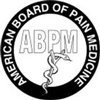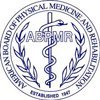Home »
Blog » Platelet-Rich Plasma (PRP)
| Stem Cell, PRP, Acupuncture in Queens & Long Island, New York
Platelet-rich Plasma (prp) | Stem Cell, PRP, Acupuncture in Queens & Long Island, New York
Tennis elbow, medically known as lateral epicondylitis, is a common condition that causes pain and discomfort in the outer part of the elbow. Despite its name, tennis elbow doesn’t only affect tennis players. It’s a condition that can impact anyone who performs repetitive arm and wrist movements, such as painters, plumbers, or even office workers. This article explores the nature of tennis elbow, its causes, symptoms, and treatment options, focusing on how interventional pain management can provide relief and restore functionality.
Read more
Golfer's elbow, medically known as medial epicondylitis, is a condition characterized by pain and inflammation on the inner side of the elbow. This ailment results from overuse or repetitive stress, leading to microtears in the tendons that attach to the medial epicondyle—the bony prominence on the inside of the elbow. While commonly associated with golfers, this condition can affect anyone engaging in activities that involve repetitive wrist and forearm motions.
Read more
What Are Elbow Sprains and Strains? An elbow sprain involves stretching or tearing the ligaments—the tough bands of tissue connecting bones—within the elbow joint. This typically occurs due to a sudden force, such as a fall onto an outstretched hand or a direct blow to the elbow. Conversely, an elbow strain refers to an injury of the muscles or tendons around the elbow, often resulting from overuse or excessive stretching.
Read more
Tendonitis is a common condition that can cause significant discomfort and disrupt daily activities. It occurs when a tendon—the thick, fibrous cord connecting muscle to bone—becomes inflamed due to overuse, injury, or age-related degeneration. At Precision Pain Care and Rehabilitation, our focus on interventional pain management provides advanced treatment options to help patients find relief and regain mobility. This blog explores tendonitis, its causes, symptoms, treatment options, and how interventional pain management can be an effective approach for long-term recovery.
Read more
Arthritis in the hand and wrist is a common condition that can significantly impact daily life, limiting the ability to perform simple tasks such as gripping, writing, or lifting. As the hands and wrists are essential for most activities, arthritis in these areas can lead to pain, stiffness, and reduced functionality. At Precision Pain Care and Rehabilitation, interventional pain management techniques provide effective relief and help restore quality of life for patients.
Read more
Platelet-rich plasma (PRP) therapy is a cutting-edge medical treatment that harnesses the body's natural healing mechanisms to promote tissue repair and regeneration. PRP has gained widespread recognition for its efficacy in treating various musculoskeletal conditions, offering patients a non-surgical alternative for pain relief and improved function.
Read more
Spinal conditions often come with difficult symptoms like chronic pain. Interventional pain management physicians use various medical approaches to address your spinal condition and related symptoms. This includes platelet-rich plasma (PRP) therapy for many of our patients. PRP treatment is a type of regenerative medicine based on a sample of your blood. With centrifuge technology, your provider concentrates the parts of your blood that trigger healing and new growth, which can then be returned to a treatment area around your spine.
Read more
Patellar tendinopathy (PT) is “jumper’s knee,” a clinical and chronic overuse condition of unknown pathogenesis and etiology. A large proportion of patients are refractory to conservative treatment, and a variety of new therapies have emerged, including PRP injections. PRP-containing growth factors have been shown to play a role in tendon healing.
Read more
Low back pain (LBP) involves a spectrum of different types of pain (e.g., nociceptive, neuropathic, neoplastic, and nonspecific) that frequently overlap. LBP can be caused by lumbar spine elements (e.g., soft tissue, vertebrae, zygapophyseal and sacroiliac joints, intervertebral discs, and neurovascular structures). Therapy for LBP usually begins with self-care and medication in combination with non-pharmacological methods, such as physical therapy and psychological treatment, in appropriate patients.
Read more
Symptomatic knee osteoarthritis (OA) is a leading cause of disability globally with a significant financial impact. The development of knee OA involves the cartilage and the entire joint, with changes in the articular bone, synovial membrane, joint capsule, ligaments, and musculature around the joint. There is no disease-modifying therapy for the management of OA; therefore, the treatment goals are to improve pain and function.
Read more
Love this Post? Spread the World






















